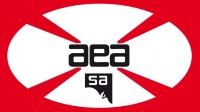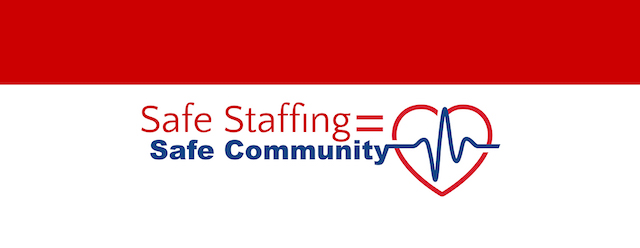
Ambulance Employees Association
Business / Practice Details
Business / Provider Type
Associations
Services Offered
Education
Profile
Business / Provider Profile
The AEA was formed in 1981 by South Australian ambulance officers so they could collectively pool their resources to protect their interests at work and advance their ability to care for South Australians.
The main issue at the time was a burning desire to force the Ambulance Service to become much more professional by improving training and education to match what was being delivered everywhere else in Australia. The Ambulance Service was run by St. John in those days and their philosophy was that career ambos were merely back-filler for the largely volunteer service.
The training regime was rudimentary, around 6 weeks, and it was being held back from progressing by St John for reasons of their own; certainly not in the best interests of patient care.
In March 1989, after years of industrial disputation and public campaigning, the AEA achieved its goal; the Government was forced to:
* provide significant improvements to training and education;
* employ enough career ambos to replace volunteers in the Adelaide metropolitan area;
* Reduce the reliance on on-call rosters for career officers in rural locations.
The dispute that achieved these goals was bitterly fought and ended up with St John and the Government conspiring to “stand down†all metro career staff. The Government gave in when it became clear that they could not sustain an ambulance service without the AEA members, and the tide of public opinion had turned in favour of what the union was doing.
Within 6 months we were gearing up for a fully professional Ambulance Service, proper tertiary education and associated improved clinical standards. This would not have happened if not for the union; it started the education evolution that is now at degree level and beyond.
In 1991, as a result of yet another dispute over the dismissal of a senior ambulance operations officer, St John decided to remove itself from the Service - a process that was finally complete in 2001. The senior staff member, Alf Gunther, was the Operations Manager for the Service and supported the AEA's push for higher clinical standards - that is why he was sacked and why the AEA fought for him. We did not get his job back, but we were instrumental in the removal of the then CEO (Bruce Patterson) and St. John. The new name (SA Ambulance Service), the new CEO (Ian Pickering), and an emphasis on improving clinical standards came out of this dispute.
The main issue at the time was a burning desire to force the Ambulance Service to become much more professional by improving training and education to match what was being delivered everywhere else in Australia. The Ambulance Service was run by St. John in those days and their philosophy was that career ambos were merely back-filler for the largely volunteer service.
The training regime was rudimentary, around 6 weeks, and it was being held back from progressing by St John for reasons of their own; certainly not in the best interests of patient care.
In March 1989, after years of industrial disputation and public campaigning, the AEA achieved its goal; the Government was forced to:
* provide significant improvements to training and education;
* employ enough career ambos to replace volunteers in the Adelaide metropolitan area;
* Reduce the reliance on on-call rosters for career officers in rural locations.
The dispute that achieved these goals was bitterly fought and ended up with St John and the Government conspiring to “stand down†all metro career staff. The Government gave in when it became clear that they could not sustain an ambulance service without the AEA members, and the tide of public opinion had turned in favour of what the union was doing.
Within 6 months we were gearing up for a fully professional Ambulance Service, proper tertiary education and associated improved clinical standards. This would not have happened if not for the union; it started the education evolution that is now at degree level and beyond.
In 1991, as a result of yet another dispute over the dismissal of a senior ambulance operations officer, St John decided to remove itself from the Service - a process that was finally complete in 2001. The senior staff member, Alf Gunther, was the Operations Manager for the Service and supported the AEA's push for higher clinical standards - that is why he was sacked and why the AEA fought for him. We did not get his job back, but we were instrumental in the removal of the then CEO (Bruce Patterson) and St. John. The new name (SA Ambulance Service), the new CEO (Ian Pickering), and an emphasis on improving clinical standards came out of this dispute.
Why us
We intervene daily on behalf of individuals, groups and the membership as a whole.
The AEA has always had a role in advocating for the community on behalf of its members and has sustained that to this very day. But unions have a bigger role than that important aspect alone; improving conditions and wages, advancing professionalism, representing members who are injured, or facing disciplinary action, or who have any of an array of grievances about management decisions. The AEA represents members collectively in dealing with restructures, Government policy matters, roster models and staffing levels; in fact, we are involved in every aspect of ambulance delivery in South Australia. The AEA has a rep on all operational selection panels, including the initial employment panel.
We have achieved a lot, but there is still plenty of work to do. The SA Health System is once again in crisis.
The AEA of SA is quite unique in Australia. It is one of the last small unions that have not been swallowed up by a large conglomerate union. Our bite is definitely worse than our bark. Despite our small size we have kept SA Ambos up with, or ahead of, interstate wages, and we have succeeded in pushing clinical delivery where SAAS is comparable to the rest of Australia.
The AEA is admired and envied by other health unions right across Australia for the conditions and rights we have won for its members. In an age where not everyone sees the benefit of belonging to union, people should be reminded that without this union, most of them would not have a job as an Ambo and those that did would not enjoy anywhere near the rights they currently have.
The AEA has always had a role in advocating for the community on behalf of its members and has sustained that to this very day. But unions have a bigger role than that important aspect alone; improving conditions and wages, advancing professionalism, representing members who are injured, or facing disciplinary action, or who have any of an array of grievances about management decisions. The AEA represents members collectively in dealing with restructures, Government policy matters, roster models and staffing levels; in fact, we are involved in every aspect of ambulance delivery in South Australia. The AEA has a rep on all operational selection panels, including the initial employment panel.
We have achieved a lot, but there is still plenty of work to do. The SA Health System is once again in crisis.
The AEA of SA is quite unique in Australia. It is one of the last small unions that have not been swallowed up by a large conglomerate union. Our bite is definitely worse than our bark. Despite our small size we have kept SA Ambos up with, or ahead of, interstate wages, and we have succeeded in pushing clinical delivery where SAAS is comparable to the rest of Australia.
The AEA is admired and envied by other health unions right across Australia for the conditions and rights we have won for its members. In an age where not everyone sees the benefit of belonging to union, people should be reminded that without this union, most of them would not have a job as an Ambo and those that did would not enjoy anywhere near the rights they currently have.
0 Follower(s)

